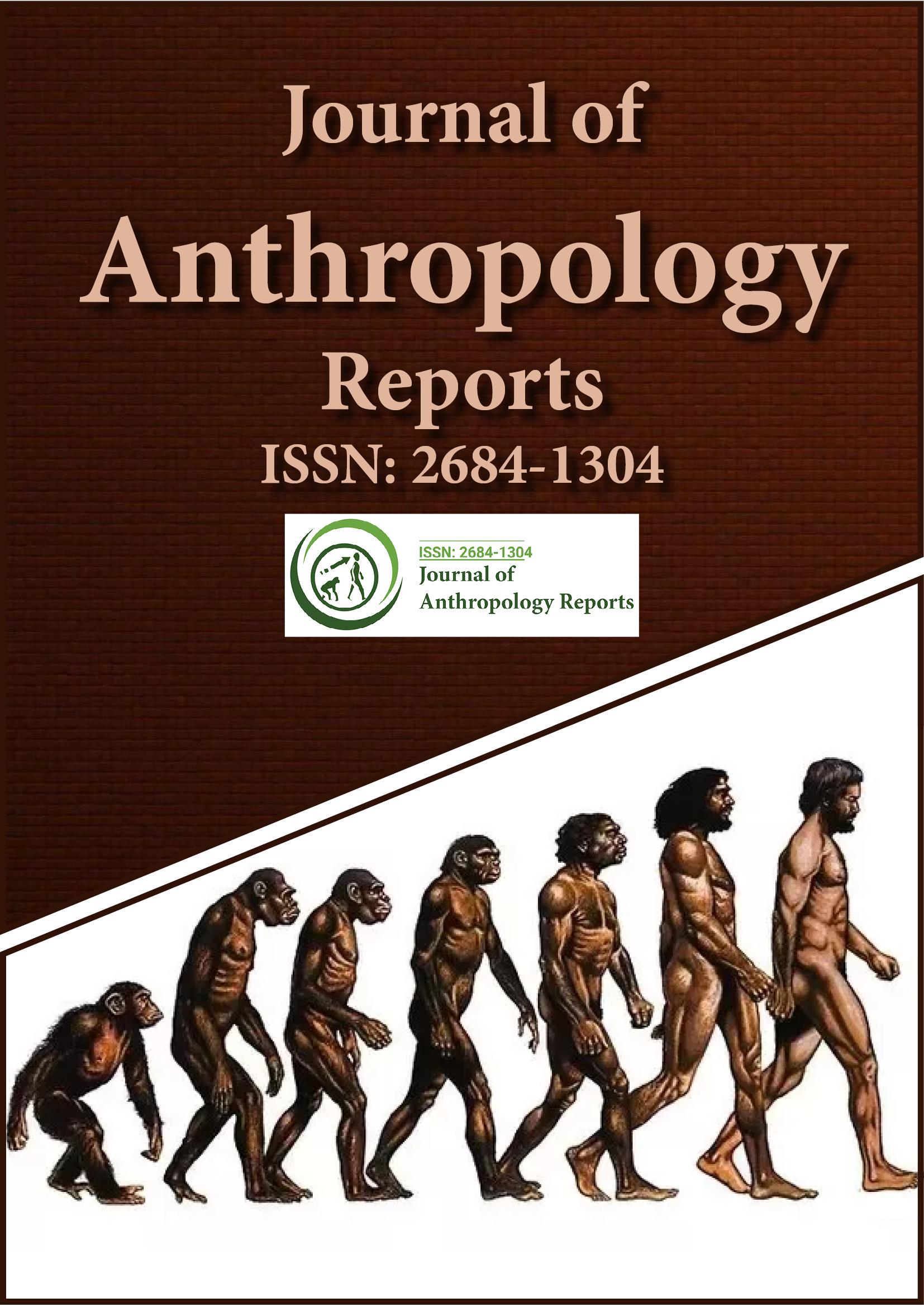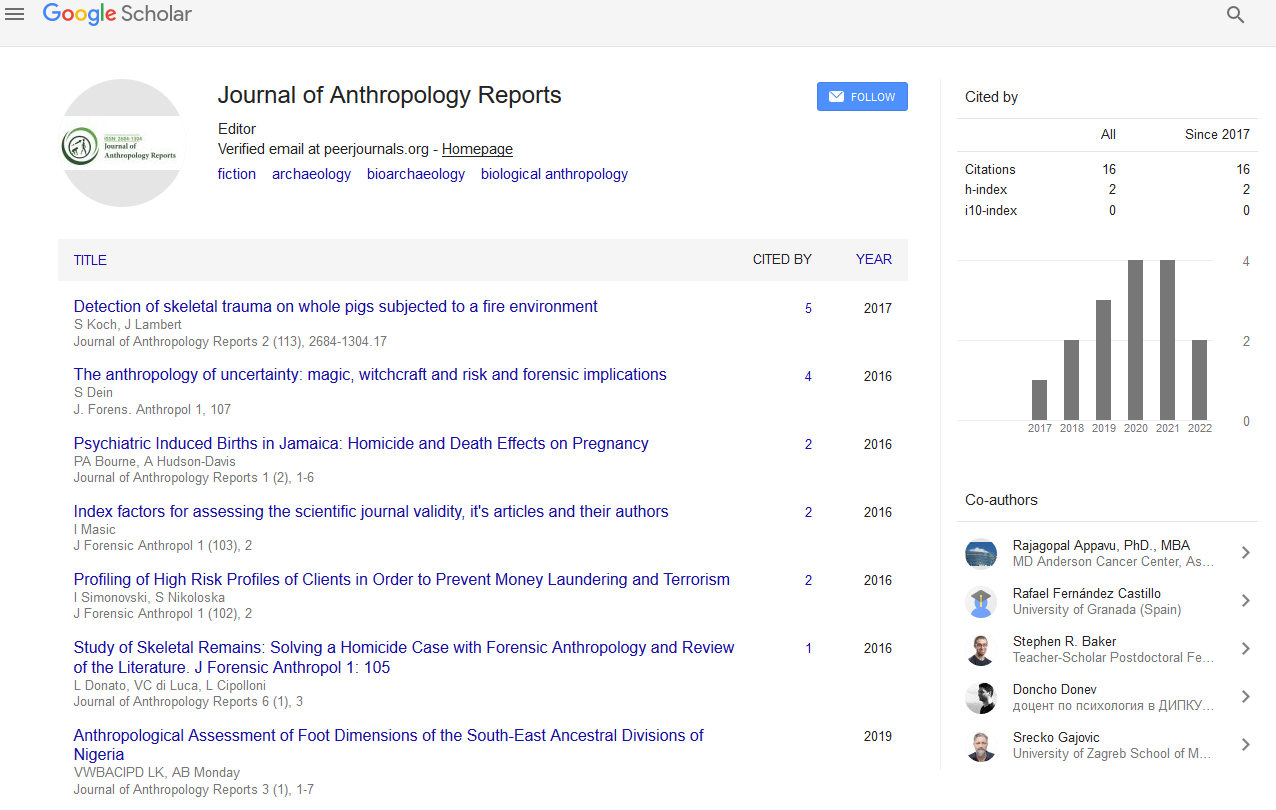Indexed In
- RefSeek
- Hamdard University
- EBSCO A-Z
Useful Links
Share This Page
Journal Flyer

Open Access Journals
- Agri and Aquaculture
- Biochemistry
- Bioinformatics & Systems Biology
- Business & Management
- Chemistry
- Clinical Sciences
- Engineering
- Food & Nutrition
- General Science
- Genetics & Molecular Biology
- Immunology & Microbiology
- Medical Sciences
- Neuroscience & Psychology
- Nursing & Health Care
- Pharmaceutical Sciences
Opinion Article - (2022) Volume 5, Issue 6
Different Types of Species and their Nature Based on the Extinction
Levi Groen*Received: 07-Nov-2022, Manuscript No. JFA-22-18978; Editor assigned: 09-Nov-2022, Pre QC No. JFA-22-18978 (PQ); Reviewed: 25-Jan-2023, QC No. JFA-22-18978; Revised: 01-Dec-2022, Manuscript No. JFA-22-18978 (R); Published: 08-Dec-2022, DOI: 10.35248/2684-1304.22.5.144
Description
Agricultural practices have had the most effects on ecosystems that people rely on for food, clean water and a stable climate, putting up to the one million species of plants and animals in danger of extinction, within many decades. People have "seriously affected" approximately 75percent of land and 66percent of ocean areas, largely due to the production of food. A number of the most significant human activities that contribute to greenhouse gas emissions are related to agriculture. Due to the usage of fertilizers and the transformation of places like tropical forests to cultivate crops or raise livestock like cattle, they represent about 25% of total emissions. The next greatest risks to nature are the harvesting, logging, hunting, fishing, climate change, pollution and the spread of exotic species. Agricultural hazards to ecosystems will only get worse as the world's population rises. Even though frequent and regular explorations are made to determine whether these species still exist, the majority of them haven't been spotted in years. The majority of these extinctions are caused by human actions, but other factors including illnesses, invasive species and habitat loss also play a role. Natural occurrences may result in habitat loss. For instance, about 200 million years ago, dinosaurs' habitat was destroyed. The earth's hot, dry environment during the Cretaceous period abruptly changed, most likely as a result of an asteroid strike. Debris from the asteroid's collision was driven into the atmosphere, which decreased the amount of energy and light that reached the surface of the Earth. The dinosaurs were unable to survive in the new, cooler habitat. Dinosaurs were once on the verge of extinction. Development may also provide indirect dangers to species.
When trees are cut down, species whose habitat depends on them may also go extinct. Tree tops provide habitat in the canopies, or top layer, of a rainforest. Vegetation like vine, fungi like fungus and butterflies like butterflies all live under the canopy of the rain forest. Many tropical bird species and animals like apes share the same traits. This habitat is being lost as trees are chopped down. Less room is available for species to flourish and reproduce. Habitat loss can also result in more interactions between people and wild animals. As development brings people closer to a species' range, they may be exposed to wild species more frequently. Closer to schools and homes may grow poisonous plants and fungus. Additionally, wild creatures are seen more regularly while merely policing their territory; these creatures should be kept away from people because doing so can be fatal.
Predators that lose their habitat to buildings, farms and commercial establishments include animals, mountain lions and alligators. Native species could become endangered as a result of people killing natural animals through pesticides, accidents like collisions with vehicles, or hunting. Genetic diversity can be lost as a due to human activity. Overfishing and overhunting have caused many animal populations to fall. Fewer breeding couples are indicative of a smaller population. An unrelated pair of fully grown animals who are able to bear healthy offspring is considered to be of that species. When breeding partners become fewer, genetic diversity declines to gather genes that will help domesticated plants fight pests and drought or adapt to climate change, plant breeders frequently return to wild variety. Climate change, however, also poses a threat to wild variety. As a result, domesticated plants risk losing a crucial source of characteristics that enable them to combat fresh dangers The very first two aspects concern and near-threatened—are used to classify species that are not in imminent danger of going extinct. The most endangered species are divided into the following three categories: vulnerable, endangered and severely endangered. Eradicated in the natural and extinct are the last two classifications, which include all extinct species. Different criterion thresholds apply to threatened categories. The species is more in danger as its population and geographic range decrease. The salinization, or increased salinity, of soil is one threat to species. The soil becomes more salinized as a result of fertilizers leaking into the soil during agricultural development. Racerunners cannot adjust to the increasing salt in their shelter and food since they dwell in and between the rocks and soil. As rubbish dumps are built on the racerunner's habitat, they also lose that space.
Citation: Groen L (2022) Different Types of Species and their Nature Based on the Extinction. J Anthropol Rep. 5:144.
Copyright: © 2022 Groen L. This is an open-access article distributed under the terms of the Creative Commons Attribution License, which permits unrestricted use, distribution, and reproduction in any medium, provided the original author and source are credited.

